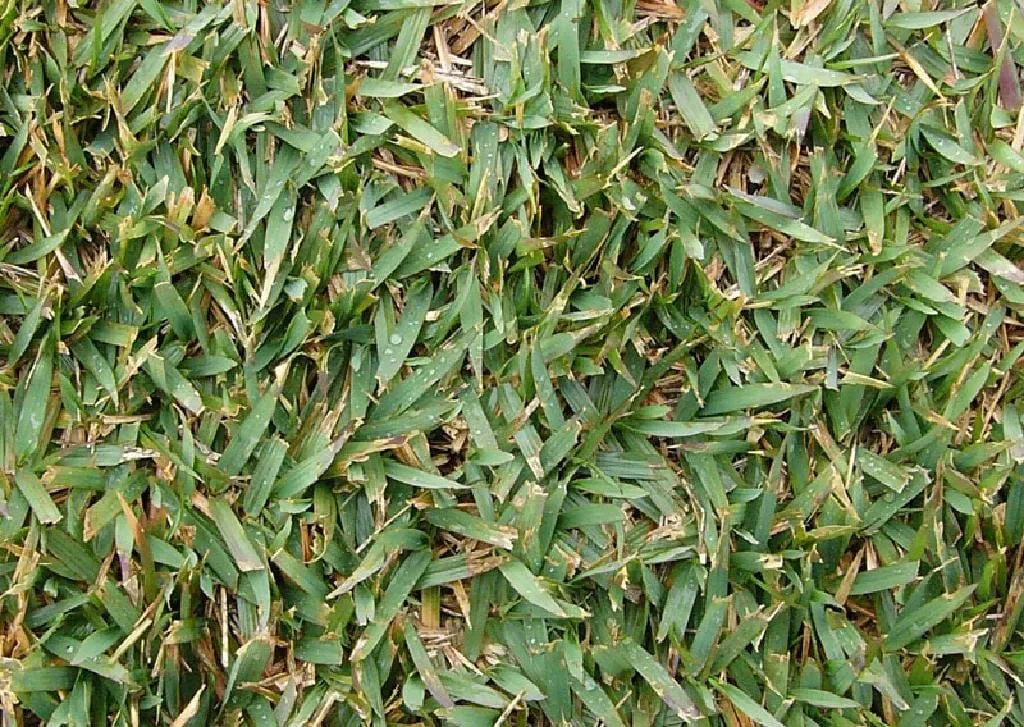Zoysia Grass Lawns

Zoysia grass is a warm-season grass that spreads by rhizomes and stolons to produce a very dense, wear-resistant turf. It is best adapted to the Piedmont and Coastal Plain regions of North Carolina, but some of the more cold tolerant cultivars can be grown in the western part of the state as well. There are three major species of Zoysia grass suitable for turf: Japanese lawn grass (Z. japonica), mascarene grass (Z. tenuifolia), and manila grass (Z. matrella). Zoysia grass can often be confused with bermuda grass. However, Zoysia grass has hairs standing upright on the leaf blade whereas bermuda grass does not. Zoysia grass is also stiff to the touch and offers more resistance than bermuda grass.
Custom Zoysia Lawn Maintenance Program
Zoysia Grass Lawn Maintenance Calendar
NOTE: Don’t be fooled by competitors offering 8-10 round applications. If you use quality products, you do not need as many applications. This is our basic service program. There are other beneficial services, such as core aeration, lime, grub control, soil testing, etc.
Zoysia Grass FAQs
Why does my lawn look like it is dying?
There are a variety of reasons why your lawn isn’t looking its best. Depending on your lawn’s grass type, maintenance or soil conditions, your lawn could be suffering from any of the following:
- Underwatering/overwatering
- Unfavorable soil conditions (lack of nutrients, temperature, etc.)
- Pests or disease
How do I make my Zoysia grass thicker and greener?
Zoysia grass conserves its energy until temperatures are consistently warm, typically in mid to late spring. Once optimal temperatures are established, fertilizing your Zoysia lawn encourages the roots and stems to grow more tightly together. Fertilization needs will vary depending on your lawn’s square footage and climate, with Zoysia grass needing minimal applications of nitrogen.
Will Zoysia grass choke out weeds?
Zoysia grass is known for its density and lushness, stemming from its outward-growing stolons. Because the grass grows outward before it grows tall, Zoysia grass can restrict weed development and growth.
How do I keep my Zoysia grass healthy?
Keeping any lawn healthy requires attention and maintenance. To avoid stunted growth or damage, provide your Zoysia grass with at least an inch of water every week. Frequent mowing every 5-7 days is also important to boost vigor and avoid shocking your Zoysia grass.
Should you water Zoysia every day?
If one or more inches of rainfall is expected during the week, additional irrigation of your Zoysia lawn isn’t necessary. For example, if your lawn receives ½ inch of rainfall in a week, another ½ of irrigation is required.
Why does my lawn look worse than last year this time?
Your lawn’s appearance may vary depending on a variety of factors. Temperature and weather conditions change each year, which can change your lawn’s growth and appearance.
Why do other lawns in my neighborhood look greener than mine?
There’s a diverse number of options when it comes to grass type, so it may be that your neighbor is using another grass type with an entirely different set of unique needs. If your lawn is receiving the essential care and maintenance it needs, don’t worry! Achieving a lush lawn requires a dedicated maintenance routine, and most importantly, patience.